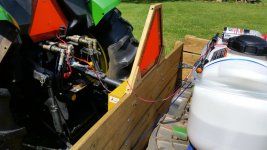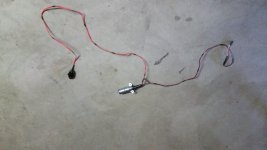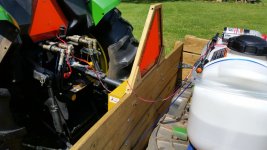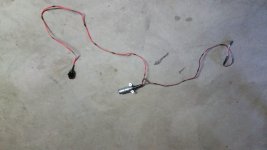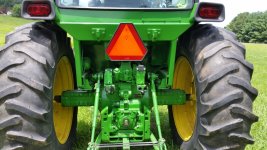If you look at the specs on the connector, they suggest using 10 gauge for the ground and for Auxiliary Circuit. I would be more concerned if the wiring for the tractor could support the amps. 16 gauge I believe is rated to handle 22amps. I tested the sprayer and it used 5 amps. One does need to add the amps of all the things on the circuit. The circuit I used was on a 20 amp fuse. There is a relay in the circuit, so one could use larger wire from the relay to connector and lower gauge wire from the tractor to turn on the circuit. The specs on the relay are 40A NO, 30A NC. I had to look up what NO and NC meant and included what I found.
A LOT of hills in my part of VA. My tractor does not have electric brakes. I have considered mounting a brake controller on the tractor that has an inertia sensor and electronic brakes on the wagon and see how that works for going downhill. Still need to more research on this, the controller may not work at all if there is no electric brakes on the tractor.
Lastly, the contacts in the switch or relay are described as "normally open" (NO) or "normally closed" (NC). This simply describes what the "at rest" state is. For a relay, that means if no power is applied to the coil/trigger wire. In the typical case where you want to turn something on, you use the "normally open" set of contacts so that when you apply power to the relay, the contacts close, and power is sent to the desired device. This is used for things like turning on your fog lights or things like that. In the case of wanting to turn something off, you use the "normally closed" set of contacts so that when you apply power to the relay, the contacts open and the power is no longer sent to the desired device. This is used for things like an emergency stop switch or other more unusual "control" cases. One example is in certain multiple relay electric fuel pump setups on fuel injected vehicles to control when the pump is on and to ensure it turns off in case of the engine stalling - this is used to reduce the risk of fire (due to the pump still pumping fuel) in case of an accident and a ruptured fuel line.
